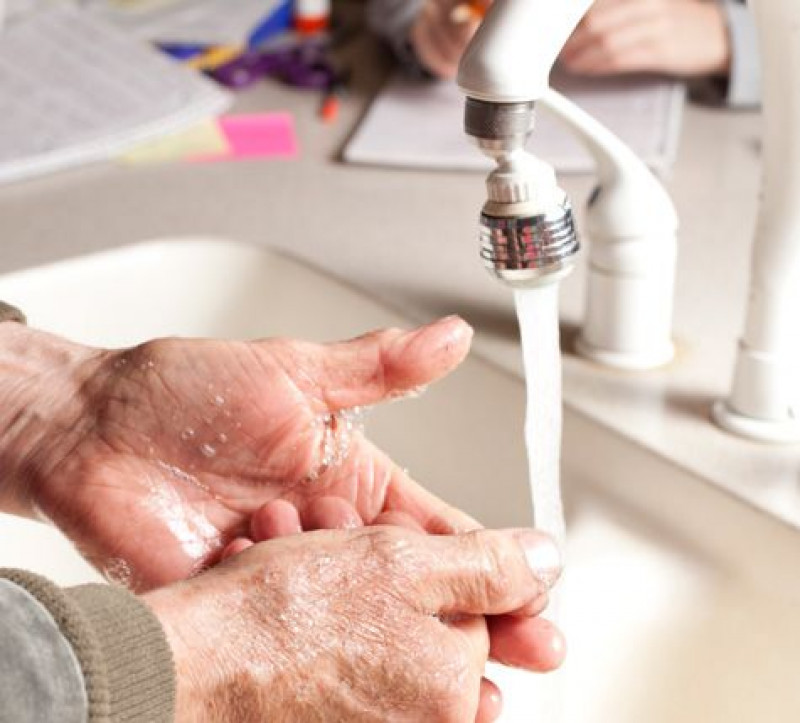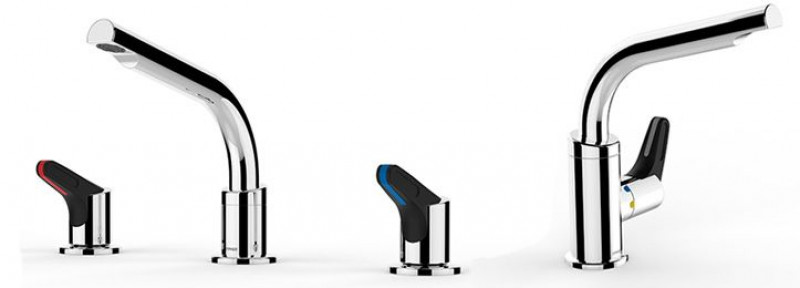-
Australia
Copyright © 2025 Powered by BCI Media Group Pty Ltd
Confirm Submission
Are you sure want to adding all Products to your Library?
Contact Detail
18 Nov 2021 by Enware

A dramatic shift is occurring in what is considered best practice in aged care design. Efficiency of care, WH&S, building codes, Australian Standards and of course costs have traditionally been the driving factors in aged care design. Today, the importance of the mental and physical wellness of residents, and the ability to provide these key indicators of quality of life must become priority.
For architects, designers, developers and aged care managers, this has resulted in the need to rethink the design and specification of products to allow residents to maintain independence through the ability to perform even the most mundane, but also necessary tasks, such as cleaning, cooking and washing. The inclusion of simple design elements which adapt to a resident’s changing needs help ensure these tasks remain achievable.
The importance of promoting the idea of wellness through design is evidenced in the overwhelming number of Government agencies and design professionals who are now more than ever lauding its benefits.

The Australian Government’s Department of Health has developed a set of design and governance principles to guide the reform and future direction of the Australian health system. The principles have a general focus on what Australian citizens and potential patients want from the system. One of the key principles of the guide is ‘Promotion of wellness and strengthening prevention’. Its core message is to promote wellness as a fundamental purpose of the health care system, to allow people to maintain optimal health for as long as possible, and see a greater emphasis on helping people stay healthy through stronger investment in wellness.1

The Living Longer Living Better initiative from the Australian Government is an aged care reform package looking to improve the quality of aged care for patients, their families and carers.2
The program identifies wellness as one of the key philosophies and approaches to the delivery of aged care services, defining it as a philosophy that focuses on whole of system support to maximise clients’ independence and autonomy:
Wellness is based on the premise that even with frailty, chronic illness or disability, people generally have the desire and capacity to make gains in their physical, social and emotional wellbeing and to live autonomously and independently. It emphasises prevention, optimising physical function and active participation. It focuses on finding the service solutions to best support each individual’s aspirations to maintain and strengthen their capacity to continue with the activities of daily living, social and community connections.4
The ability to undertake simple activities such as meal preparation, getting up and down to go to the toilet and being able to take a shower can have a great bearing on the independence and confidence of a resident and in turn greatly improve their quality of life.
" The ability to undertake simple activities such as meal preparation, getting up and down to go to the toilet and being able to take a shower can have a great bearing on the independence and confidence of a resident
Architect Robert Goodliffe of ClarkeHopkinsClarke says that Australian aged care design is today showing signs of ‘falling behind’, with the current ingrained businessas-usual approach for retirement living and residential aged care jeopardising and restricting innovative solutions. Cath Muhlebach, also of ClarkeHopkinsClarke champions the designing of residential aged care facilities to promote the positive well-being of older people, but acknowledges the challenges faced. Pure dementia design has many benefits but does not necessarily create the types of spaces residents without dementia would want to inhabit. Muhlebach gives the example of dementia specific bathrooms which are designed for clinical and utility needs but are considerably different to standard bathrooms in the community. Perhaps most importantly:
“It is crucial that any design cares for the whole person. A strategic approach to the planning and design of aged care and independent living facilities should involve the potential to deliver many longterm benefits to residents, staff and operators.”5
" Australian aged care design is today showing signs of ‘falling behind’


Water is our most precious resource, and central to human existence. A significant number of the exercises and activities most important to daily life revolve around easy access to water.
From washing, cooking and cleaning, to staying hydrated, or simply making a cup of tea; enabling aged care residents to easily access water to perform any one of these simple tasks is crucial to the idea of wellness and promoting the retention of independence for as long as possible.
Drinking an adequate amount of water is essential for health and wellbeing. Many older people do not drink sufficient water or fluids to maintain adequate hydration and as a result dehydration is common amongst those living in residential care facilities and those living in the community. The consequence of not drinking sufficient water can lead to poor health outcomes and dehydration can have a significant impact on quality of life.
For aged care residents, being able to clean their home or room before family or loved ones visit, and being able to cook or make a cup of tea can instil confidence and a feeling of independence. Designing
for the users physical and cognitive capabilities enables independent functionality across all daily tasks. The ease in which someone can fulfil all the daily activities associated with the use of water requires a special focus in the design of fittings and associated environment. It is through this design focus that greater independence can be enabled.

Created with the vision that well designed tapware plays an important role in providing greater access to the use of water, the Enware Wellbeing range of tapware is designed to enhance independence and accessibility of water use, and provide greater quality of life to aged care residents.
Key design elements include:


" Enware Wellbeing range of tapware is designed to enhance independence and accessibility of water use
Enware Australia is an industry leader in aged care solutions that deliver a greater degree of user comfort, dignity respect and safety for residents are carers. From speciality tapware, sanitary ware and a range of adaptable bathroom and living systems, you can choose Enware with confidence.
REFERENCES




